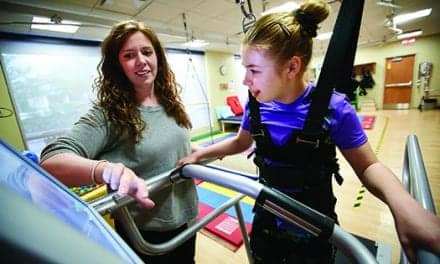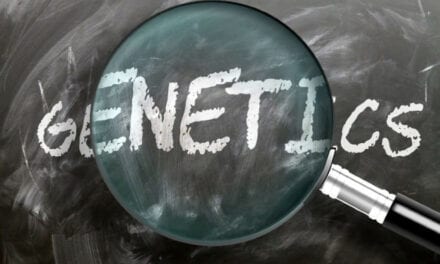 |
|
Simon McKeown, reader in computer animation at Teesside University, Middlesbrough, UK. Credit: Image courtesy of Judy Hume, University of Teesside. |
Imagine a world of human perfection where disabled people are a distant memory, edited out by medical enhancement and economic cost-benefit analysis: a world where thanks to generic selection and economic crises, disabled people find themselves expendable.
Is such a world desirable?
Not necessarily so, says artist and computer animator Simon McKeown, from the University of Teesside’s School of Computing, Middlesbrough, UK, who is challenging many of the notions of so-called human ‘imperfection’ in a high-tech film-based exhibition called Motion Disabled.
Produced with colleagues in the West Midlands, it uses a number of ‘disabled actors’ from around the country and is scheduled to run for 4 months at an art gallery.
The film is an animated digital sculpture, says McKeown, the university’s reader in computer animation and an experienced 3-D animator, with 20 years’ industry experience in TV and computer games production. “We’ve used state-of-the-art Hollywood technology more usually associated with superheroes like Spiderman to capture ordinary disabled people in their human diversity," he says. "I used this technology to capture for now and forever the motions of ‘difference’. This has allowed me to ask questions such as: ‘Do we value difference?’ ‘How do disabled people’s bodies fit into current notions of normality?’ ‘And, is physical diversity about to become virtual?"
The project has won a Wellcome Trust grant worth £30,000, which enabled McKeown to team up with the disability arts organization Outside Centre, based in Wolverhampton, run by Dr Paul Darke, who has worked as producer on the exhibition.
"Motion Disabled achieves the goal of great art in that it not only represents the world with originality and wit but undermines the essence of the body ideal to force the spectator to confront their own sense of normality and abnormality both corporeally and socially," Darke says. “Motion Disabled is the best piece of art I have seen in years: that it engages, has wit, and intelligence is the icing on the cake."
McKeown hopes the film will contribute to the mainstream intellectual and artistic exploration of the very nature of what societies in the future may lose—difference.
“Through the creative use of an animation process, this film aims to start a debate on whether society’s use of bioscience and medical enhancement is creating a landscape of merely ordinary bodies," he says. "Art is to make people see their surrounding society differently and Disabled Motion makes a unique contribution to this debate.”
Actors used in the motion-capture sessions included disabled people with very different impairments, such as Mat Fraser, a TV personality who has thalidomide; Steve Graham, a Web developer from Teesside University’s School of Computing, who has cerebral palsy; and Frank Letch, who was born without arms.
“It is not just great fun to be portrayed in a world that usually seems obsessed with ultra perfection, and to have one’s unusual and individual way of moving be a part of the gaming screens; but if we don’t include those of us who move and do things differently, it would be a huge loss to the variety and creativity of the games and animation," Fraser says.
Letch, already something of a media star having been featured inTV documentaries as the 64-year-old Mayor of Crediton in mid Devon who can peel potatoes, drink a pint in his local bar, write and type, and even change a baby’s diaper using his bare feet. “If a surgeon walked into this room now and said he could graft perfect arms on me if I wanted, I’d tell them I want to stay the way I am because I think it’s made me a much more interesting person," Letch says. "I am not disabled. It’s just that I have an inability to do some things the way other people do.”




